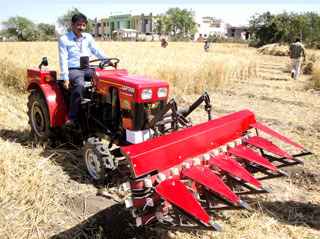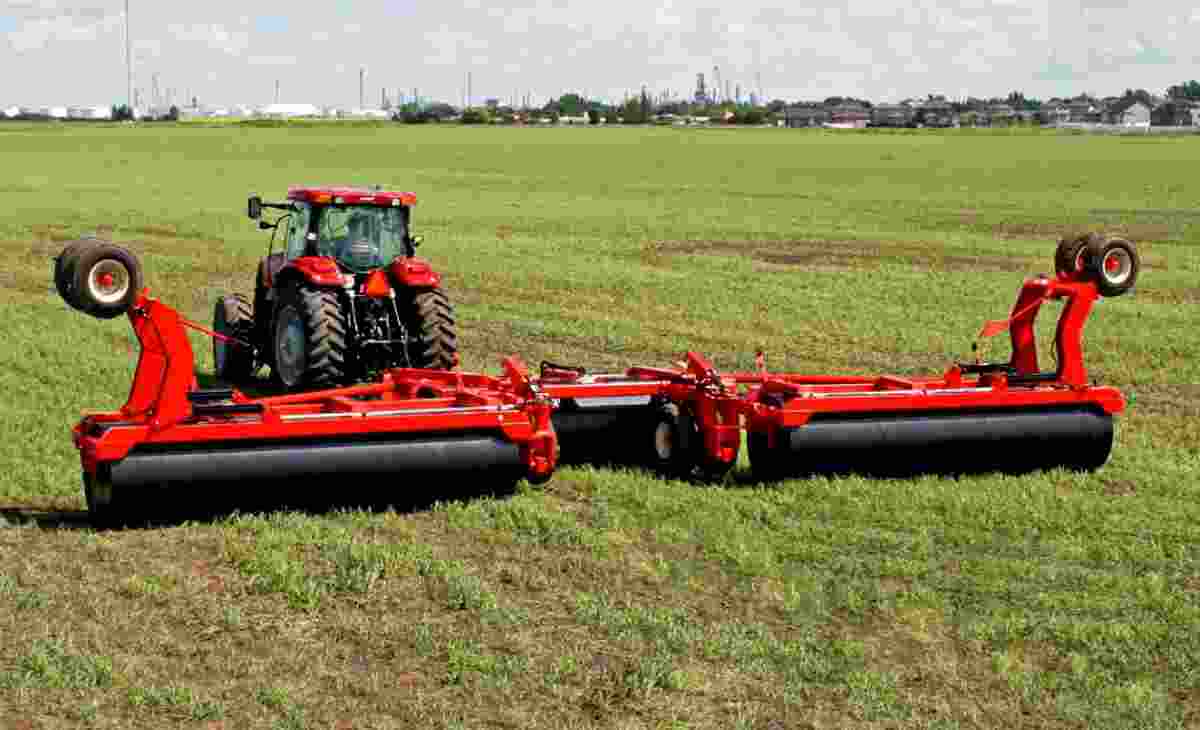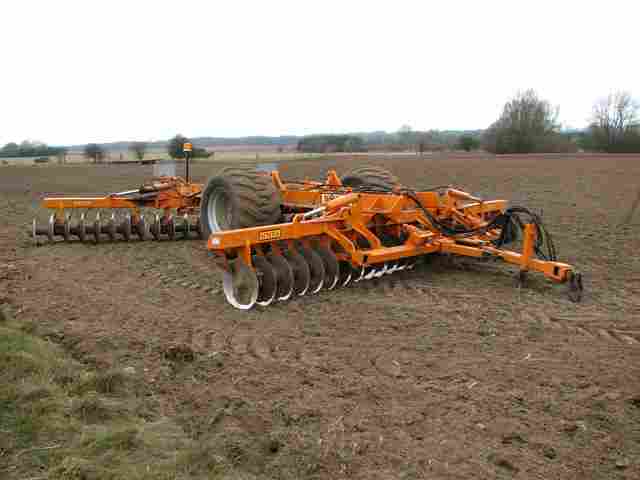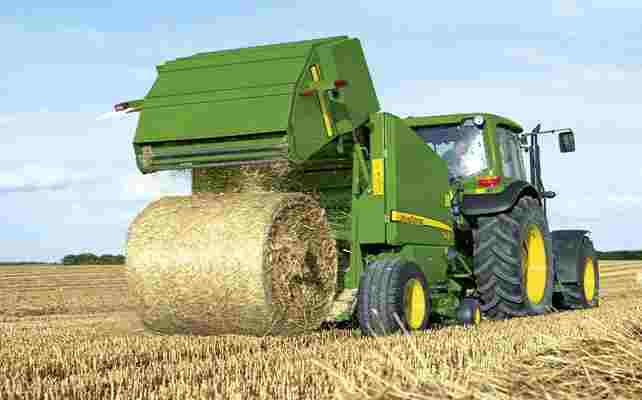 Alfred Ajibola
- Sat, 29th February, 2020 @ 10:48 AM
Alfred Ajibola
- Sat, 29th February, 2020 @ 10:48 AM
Topics in Agricultural Science
Problems of agricultural marketing Channels of agricural marketing Agricultural marketing: Stages of agricultural marketing Forest management practices in agriculture Forest management and importance of forest Agricultural ecology and farm ecosystem Components of farm ecosystem Soil formation in agricuture Economic empowerment through agricuture Management as a factor of production in agriculture Labor as a factor of production in agriculture Finance as a factor of production in agriculture Water as a factor of production in agriculture Land as a factor of production in agriculture Len Academy Agricultural Science midterm questions for JSS1, 2nd term Len Academy Agricultural Science midterm questions for jss2, 2nd term Clay soil explained with its types and characteristics Loamy soil explained with its characteristics Sandy soil: Characteristics of sandy soil and ways to make it fertile Soil explained with its compositionAcademic Questions in Agricultural Science
The ideal pH for the optimum growth of most agricultural crop is between _____.
A. 1 – 3.5
B. 4 – 5.5
C. 6 – 7.5
D. 8 – 9.5
E. 10 – 11.5
F. 12 – 13.5
People who go about their lives by raising and herding livestock such as cattle, sheep and goats are said to practice _____.
A. Pastoralism
B. Pasturalism
C. Herding
D. Herdsmen
E. Animalism
F. Anime Farming
The act of giving birth in pigs is called _____.
A. Calving
B. Piggery
C. Kidding
D. Farrowing
E. Calfing
F. Pigging
Which of the following is not a vegetable?
A. Cashew
B. Cocumber
C. Tomatoes
D. Carrot
E. Squash
F. Eggplant
All plants are crops.
A. True
B. False
In agriculture, macronutrients are essential nutrients required by plants. Which of the following is not a macronutrient?
A. Zinc
B. Sulphur
C. Calcium
D. Phosphorus
E. Potassium
F. Magnesium
Which of the following is false concerning micronutrients?
A. They are non-essential nutrients
B. They are required by plants in minute quantities
C. Iron is a micronutrient
D. Chlorine is a micronutrient
E. Copper is a micronutrient
F. Boron is a micronutrient
_____ is a term that describes the biological, chemical and cultural control tactics employed to make pest management economical, environmentally friendly and socially acceptable.
A. Integrated Pest Management
B. Integral Pest Management
C. International Pest Management
D. Inclusive Pest Management
E. Imbibed Pest Management
F. Inclusion Pest Management
Mechanised farming is a system of farming whereby agricultural machines are utilized on farmlands. The use of agricultural machines greatly increases the farmer's output and productivity. For this reason, they are used on large farmlands, thus replacing the primitive simple farm tools.
Please read on agricultural tools and their uses here.
Below are various agricultural machines and their uses:

An tractor serves a variety of purposes. In agriculture, one of such purpose is to effectively pull or push other agricultural machines like planters, rollers, plough, reaper, balers, mowers, combine harvester and so on.
They are also used for carrying or hauling different types of large materials from one point to another.
You can read on the roles of government in agricuture here.

Irrigation sprinklers are also referred to as sprinklers or water sprinklers.
They are used to water large areas of farmland. They may also be used for controlling dust particles generated from various activities carried out on land.
You can attempt Len questions on agricutural science here.

They are pulled by tractors and utilized in cultivating the soil, preparing it for sowing. They do this by turning over the upper layers of the soil in order to expose fresh nutrients to its surface. Through this action, small plants, weeds and other particles present on the soil becomes buried, thus bringing about their eventual breakdown and decomposition.
Please read on the causes of soil erosion here.

A cultivator helps to efficiently mix the soil with organic fertilizers and other materials.
The cultivator is also used for the preparation of seedbed. It is able to carry out this function because it controls weeds, while also warming the soil on an agricultural land. Through this process, the planted crops are able to grow on the soil which now contains less weed, adequate water and more nutrients.
Please read on agricultural land and its uses here.

They are also driven by a tractor. The reaper helps to cut crops into a size of about 3-4 inches above ground level. The crops are then carried via its conveyor belt.
A reaper is very useful for harvesting crops like cereals, grasses, oats and barley.
You can read on the problems of agriculture in Nigeria here.

They are tractor driven and are used for tilling the soil. A subsoiler acts as a tillage machine that breaks up and loosens the soil. They prove to be useful in farmlands with compacted soils.
Please read on soil erosion here.

They are pulled by tractors and are used to level the soil by breaking large clumps of particles present on the surface of the soil.

They are commonly termed 'a set of harrows'.
They perform a tillage function like the plough and subsoiler. However, that of the harrows occur at the surface of the soil.
Functionally, a harrow breaks and level up the soil's surface.

Mowers are agricultural machines used mainly for cutting grass (and forage crops).
Due to the manner at which the grasses are cut, hay and silage becomes the end result of the cut grasses. These are then placed into rows referred to as windrows.
You can read differences between gymnosperms and angiosperms here.

A baler, also called a hay baler is used for compressing crops that had been cut or raked; for instance - silage, hay and flax straw. The baler aid in compacting the cut crops into bales so that they can be easily moved from one point to another. Also, the crops becomes easily stored when in bales.
Please read on agricultural terms and their meanings here.

The combine harvester is simply referred to as 'combine'. It perfoms at least two functions.
Firstly, it reaps (harvests) grain crops. Secondly, it threshes it, separating the grain kernels from their seed coverings and other chaff that may be present around it.
In summary, the major operations carried out by the combine harvester are reaping, threshing and winnowing.
You can read on asexual propagation in plants here.

A planter (usually towed behind a tractor) functions to plant or sow seeds in rows throughout the farmland.
The planter plants the seeds down the soil in a definite manner along rows at regular intervals.
Kindly share this article via the links below:

Please click here to contact Alfred if you require any of the following services:
If you need a standard website at an affordable price.
Online training on the academic subjects: biology, chemistry and basic science.
If you require an advanced smart school management system (web application) for your school.
Click here to read on Len Academy Smart School Software.
Please click here to follow Len Academy on Google News.
Amazing facts in Agricultural Science
Cows technically have one stomach, not four. However, a cow's stomach has four compartments. These are: rumen, reticulum, omasum and abomasum
Peanuts are legumes and not nuts
Although plants neither see nor hear, they can recognize their siblings and even give them preferential treatments
Squirrels do plant more trees (through their actions) than an average human in their lifetime. They often hide their acorns and nuts underground and forget about them
Cows have got the ability to walk up stairs, but not down stairs
A group of cows is called a team, drove or herd.
People just prefer to call them herd
Notable points in Agricultural Science
Below are characteristics of gymnosperms:
Their seeds have cones that protect them.
Sepals and petals aren't present in their cones.
Stigma and style are absent.
They do not produce fruits. Only seeds are formed.
Companion cells are absent.
Sporophyll form the cones.
Anther and filament are absent.
The ovules are not present in the ovary.
Gymnosperms do not possess flowers.
Please read on the anatomical differences between gymnosperms and angiosperms here
The flower is the reproductive organ in plants' sexual reproduction. In order to achieve a successful sexual propagation or reproduction in plants, the floral parts of the flower are utilized.
The floral parts of a flower consists of the followings:
Sepals
Petals
Stamen
Carpel
The stamen is male portion of a plant. It consists of the anther and filament.
The carpel (or pistil) is the female portion of the plant. It consists of the stigma, style and ovary.
An organism will be considered a pest if it does one of the followings:
Attack crops and eat its seeds, roots, stem, leaves and flowers. Examples are locust and grasshoppers.
Cause damage to stored food, fruits or other agricultural produce. Some may even urinate or deaficate on these products. Examples are rodents, cockroaches and mice.
Attack and kill farm animals like goats, sheep and cattle. Examples are foxes, wild cats and snakes.
Act as disease vectors. A vector is an organism that carries parasite and other disease causing organisms, without being affected; but when they introduce the parasites into their host, such host becomes infected with disease. Examples of vectors are rodents and mosquitoes.
Below are the classification of crops based on their uses:
Oil crops
Vegetable crops
Latex crops
Drug and Medicinal crops
Beverage crops
Fibre crops
Fruit crops
Root and Tubers
Legumes
Spices
Cereals
All crops are plants but not all plants are crops. Below are some instances:
Weeds are considered as plants, not crops.
Parasitic plants are not necessarily crops. Examples of parasitic plants include mistletoe, corpse flower and striga.
Carnivorous or insectivorous plants are not necessarily crops. Examples are sundew, venus flytrap and pitcher plant. The image below shows a carnivorous plant (venus flytrap).

Meanwhile, always understand that all crops are plants, and they are grown for food, money or something beneficial.